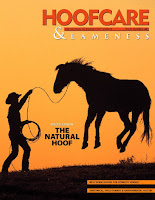The following text is from a press release issued last week by the American Veterinary Medical Association (AVMA), which is integrally involved in state and national legislation regarding the practice of veterinary medicine and, overall, is influential in all matters related to animal care. Text in bold emphasized by the Hoof Blog so it will not be overlooked by those it may affect.
Do you have an idea on how animals can receive the best care from veterinarians and other members of the veterinary healthcare team? Early next year, you will have an opportunity to offer input that could help make your ideas a reality.
The American Veterinary Medical Association (AVMA) is soliciting public comments on its Model Veterinary Practice Act (MVPA). The current MVPA, which was last reviewed in 2003, includes sections on definitions, veterinary medical boards, licensing, client confidentiality, veterinary education, veterinary technicians and technologists, abandoned animals, and cruelty to animals, as well as other topics.
"This is an excellent opportunity for veterinarians, pet owners, the public, farmers or really anybody who cares about animals and veterinary medicine to offer input that will help guide the profession," says Dr. John Scamahorn, chair of the AVMA Model Veterinary Practice Act Task Force. "The Model Veterinary Practice Act is used by state legislatures and state veterinary licensing and exam boards to help shape the rules and laws that govern the practice of veterinary medicine."
The AVMA is issuing early notice of this public input period to encourage all interested parties to get involved and give informed comments. The current MVPA is available for public review on the AVMA website, at http://www.avma.org/issues/policy/mvpa.asp.
Organizations and individuals can contribute comments about the MVPA on the AVMA website during the 30-day public comment period, which is scheduled to start in January 2011. The AVMA requests that the comments submitted be specific and include suggested language for the new MVPA.
"The AVMA wanted to give notice of this public comment period as early as possible because we realize that there is a lot of interest in the Model Veterinary Practice Act, which is lengthy and contains many important provisions," explains Dr. Ron DeHaven, chief executive officer of the AVMA. "We feel it is important to alert stakeholders now so they can begin to review the many provisions of the act in advance of the comment period. Some organizations may even choose to meet and discuss the act in order to come to consensus on their comments, and we wanted to encourage and allow for these discussions about the future of veterinary medicine."
The first MVPA was created by the AVMA in the early 1960s. Over the years, it has been revised several times to reflect changes in the profession such as new technologies and techniques and even societal changes.
(end of text from the AVMA)
© Fran Jurga and Hoofcare Publishing; Fran Jurga's Hoof Blog is a between-issues news service for subscribers to Hoofcare and Lameness Journal. Please, no use without permission. You only need to ask. This blog may be read online at the blog page, checked via RSS feed, or received via a digest-type email (requires signup in box at top right of blog page). To subscribe to Hoofcare and Lameness (the journal), please visit the main site, www.hoofcare.com, where many educational products and media related to equine lameness and hoof science can be found. Questions or problems with this blog? Send email to blog@hoofcare.com.
Follow the Hoof Blog on Twitter: @HoofcareJournal
Join the Hoofcare + Lameness Facebook Page













